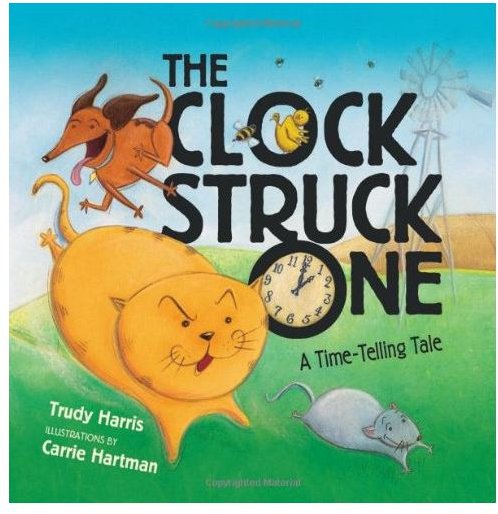Telling Time to the Hour: A Kindergarten Lesson Plan
How long do we have before recess? When is lunch? What day do we have art? So many things revolve around time. It is a difficult concept to grasp sometimes. In this two-day lesson plan you will give the students a concept of seconds and minutes before focusing on an hour. Then students will practice telling time to the hour on both an analog clock and a digital clock.
Objectives:
- Students will tell time to the hour using digital and analog clocks.
**
Materials and Preparation
- Book: <em>It’s About Time!</em> <em>Math Start: Level One</em> by Stuart Murphy
- Book: The Clock Struck One: A Time-Telling Tale by Trudy Harris
- Large clock (analog) with movable hands
- Digital clock
- A timer
- Student copies of “Telling Time Homework” printable worksheet
- Student copies of <strong>“Clocks by the Hour”</strong> printable worksheet
- 12 sheets of construction paper with the numbers written from 1 through 12 (one number on each sheet).
- Two thin strips of paper - one a little longer than the other- to resemble clock hands
Vocabulary:
Analog: a clock or watch showing the time by means of hands
Digital: showing time by displayed digits or numerals
O’clock: used to specify the hour when telling time
Second: a small increment of time
Minute: sixty seconds
Hour: sixty minutes
Procedure for Day One:
Gather your students in front of you and show them the analog clock and ask them why it is used. Show them that the hands move around in a “clockwise” direction all the time. The longer hand is the minute hand and the shorter hand designates the hour. Notice that as the minute hand moves the hour hand also moves but at a slower rate. On a clock, time is divided into seconds, minutes and hours. To give the students a sense of what each segment of time is, guide your students through these activities:
- Clap your hands one time. That is one second.
- Put students in pairs. Use the timer. One student counts how many times their partner can clap in ten seconds. Then reverse the roles and do it again.
- Jog in place for one minute. Is a minute longer or shorter than a second? The minute hand goes around one time each minute.
- Now show your students that you are setting a timer for one hour. That means that the minute hand will go around sixty times. Ask them to predict what they will be doing when the timer goes off. Write down some predictions.

Next show the students that when the hour hand is pointing to a number, let’s say it is a four, and the minute hand is on the twelve then it is 4 o’clock. Show a few examples and call on students to tell the time. Then use the digital clock and explain the hour is to the left of the two dots, which is called a colon. So if it shows 4:00 it is four o’clock.
Finally read The Clock Stuck One: A Time-Telling Tale. This is a new version on the old poem “Hickory Dickory Dock”. This is a book you will want to read more than once. Notice all of the times on the clocks and the riotous activity throughout the house.
Homework:
<strong>“Telling Time Homework”</strong> which requires parental help to count the clocks in the house (remember the stove, microwave and television) and to mark down some times such as the child’s dinnertime and bedtime.
Procedure for Day Two:
Collect the homework to use for the follow-up activity. Then read It’s About Time! The book documents the day of a young boy with clocks on each page showing the hour he is doing an activity.
Then place the twelve sheets of paper in order in a circle on the floor to resemble a clock. Include the two strips of paper used for clock hands. Use the homework and call on students to show a particular time on the clock that was indicated on their papers. For example, “Your paper said that you go to bed at 8:00. Please show us what 8:00 looks like on the clock.” You can extend the activity by asking how many hours the child slept if they got up at 7:00 am. How can we use the clock to figure this out?
Assessment:
Use the printable worksheet <strong>“Clocks by the Hour”.</strong>
Resources
Murphy, Stuart. It’s About Time: Math Start Level One. Harper Collins, 2005.
Harris, Trudy. The Clock Struck One: A Time-Telling Tale. Millbrook Press, 2009.
